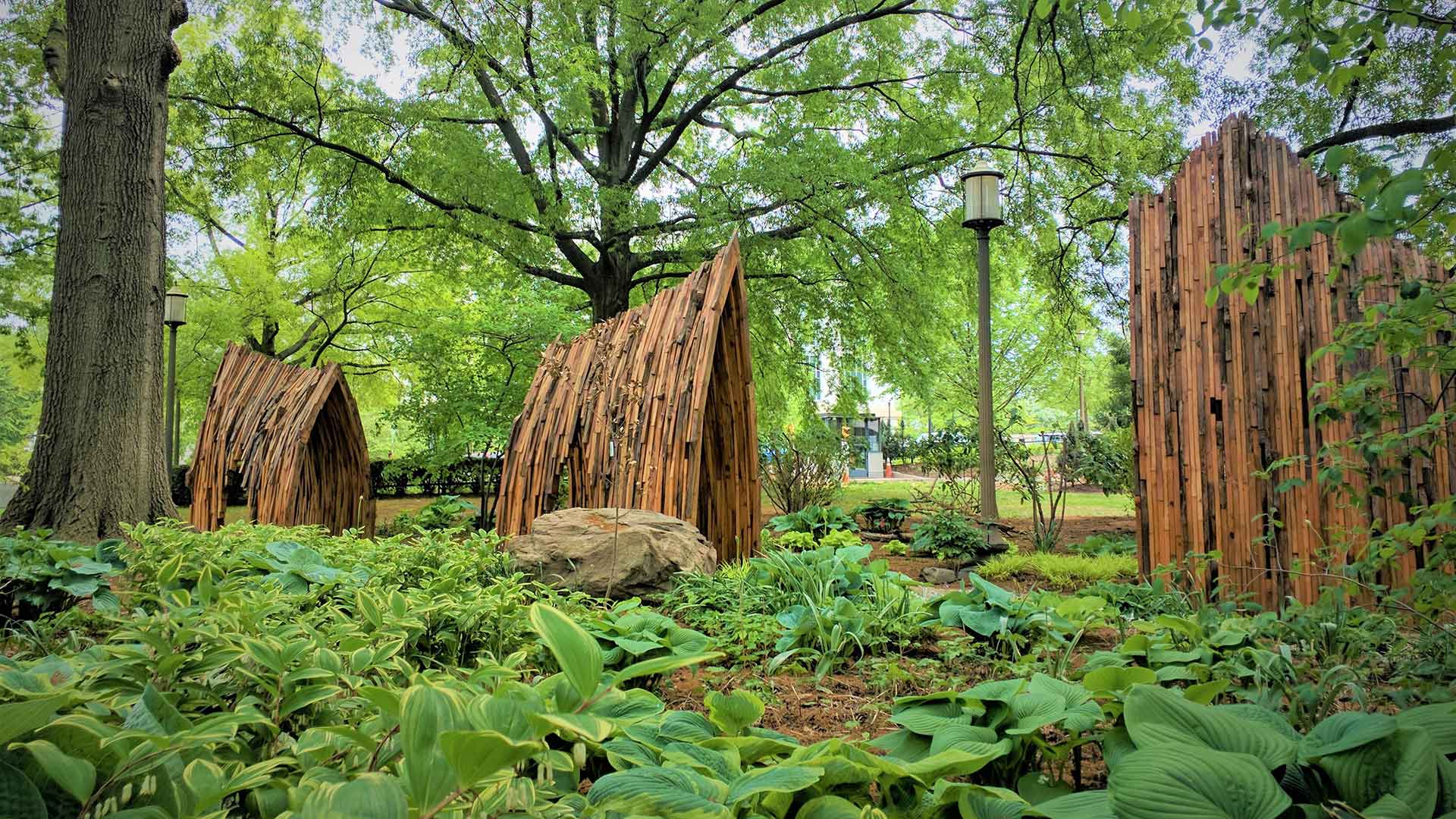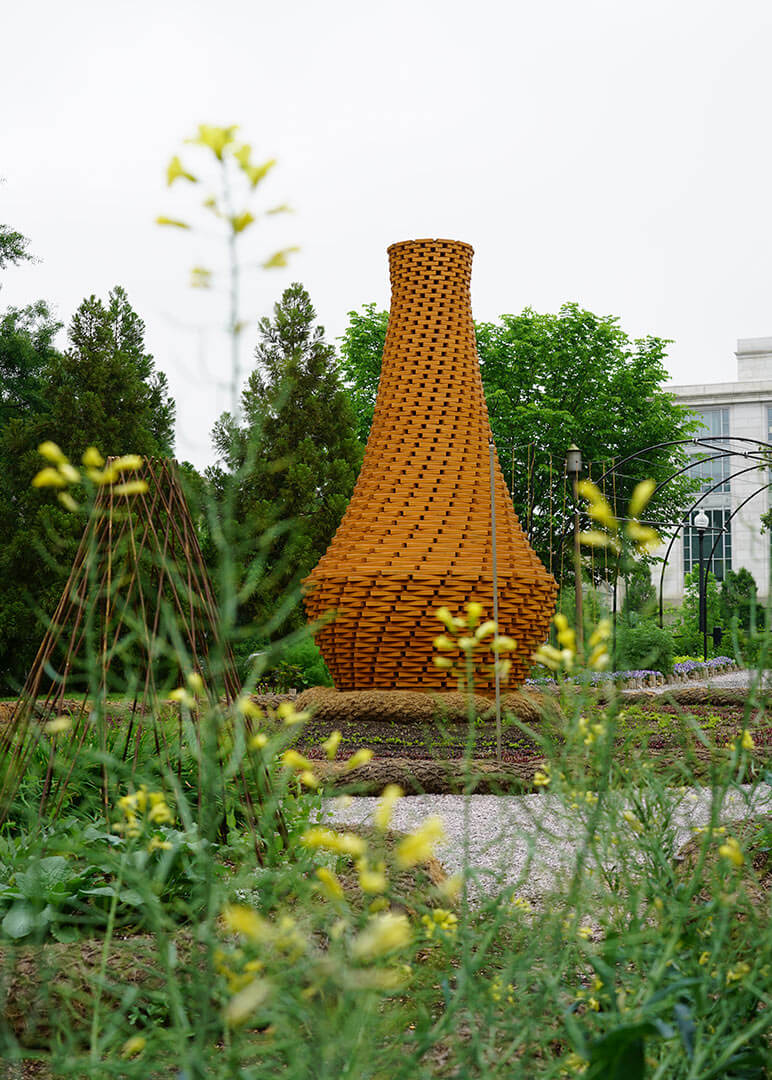- June 11, 2019
- By Sala Levin ’10
Stand at the corner of 14th Street and Constitution Avenue in downtown D.C. long enough—trust us, it won’t be long at all—and you’ll notice tourist after tourist, phone camera at the ready, walking up a little path outside the Smithsonian National Museum of American History. Their destination: a giant mushroom sculpture made of slabs from five kinds of trees.
 Created by UMD art Professor Foon Sham, "Mushroom," with its varying colors and textures, isn’t just a distinctive photo op backdrop. It’s a prominent part of a new Smithsonian Gardens exhibition with installations at 14 sites across the Mall running from last month through December 2020. Sham has three pieces in the “Habitat” exhibit, which highlights how protecting habitats is crucial to protecting the flora and fauna that rely on them.
Created by UMD art Professor Foon Sham, "Mushroom," with its varying colors and textures, isn’t just a distinctive photo op backdrop. It’s a prominent part of a new Smithsonian Gardens exhibition with installations at 14 sites across the Mall running from last month through December 2020. Sham has three pieces in the “Habitat” exhibit, which highlights how protecting habitats is crucial to protecting the flora and fauna that rely on them.
When the Smithsonian approached Sham two years ago to be part of the exhibit, he settled on the mushroom form to emphasize how fungi, trees and soil share a symbiotic relationship, relying on one another for nutrients and other life essentials. He also appreciated mushrooms’ underground networks of “thousands of interlocking strands … They’re communicating to each other and supplying nutrients. They symbolize what we are doing today, that we connect to each other with phone and Internet.”
 The trees that became Sham’s mushroom—felled by lightning, age or disease—came from the grounds of the Smithsonian, and are a mix of birch, oak, elm, cypress and Katsura, native to Japan.
The trees that became Sham’s mushroom—felled by lightning, age or disease—came from the grounds of the Smithsonian, and are a mix of birch, oak, elm, cypress and Katsura, native to Japan.
Sham’s other two pieces in the exhibit are "Arches of Life," a series of hollow, arched wood structures meant to symbolize how dead wood can become a critical habitat for animals and insects, and "Vascular Form XI, Unbound," a towering vessel that occupies a small island in a fountain-centric garden to represent how water also contains life.
His work has been displayed at galleries and spaces in Washington, D.C., Chicago, Norway, Hungary and elsewhere around the world. “For all the physicality of Sham’s work—its size, look and even smell—the essential escape he offers is into the imagination,” The Washington Post once wrote of him.
 Sham began his artistic career nearly 40 years ago working with materials like steel, concrete and Plexiglass, but soon moved to wood, drawn to the material for the way in which each slab is unique. “Each individual piece has an individual identity,” he says, likening the differences between pieces of wood to the differences between people.
Sham began his artistic career nearly 40 years ago working with materials like steel, concrete and Plexiglass, but soon moved to wood, drawn to the material for the way in which each slab is unique. “Each individual piece has an individual identity,” he says, likening the differences between pieces of wood to the differences between people.
Wood sculptures also honor the lives of the trees that died for them to exist, Sham says. “Trees have to go sometimes, but I give them a second life and a second identity.”
Topics
Arts & CultureTags
Visual Arts